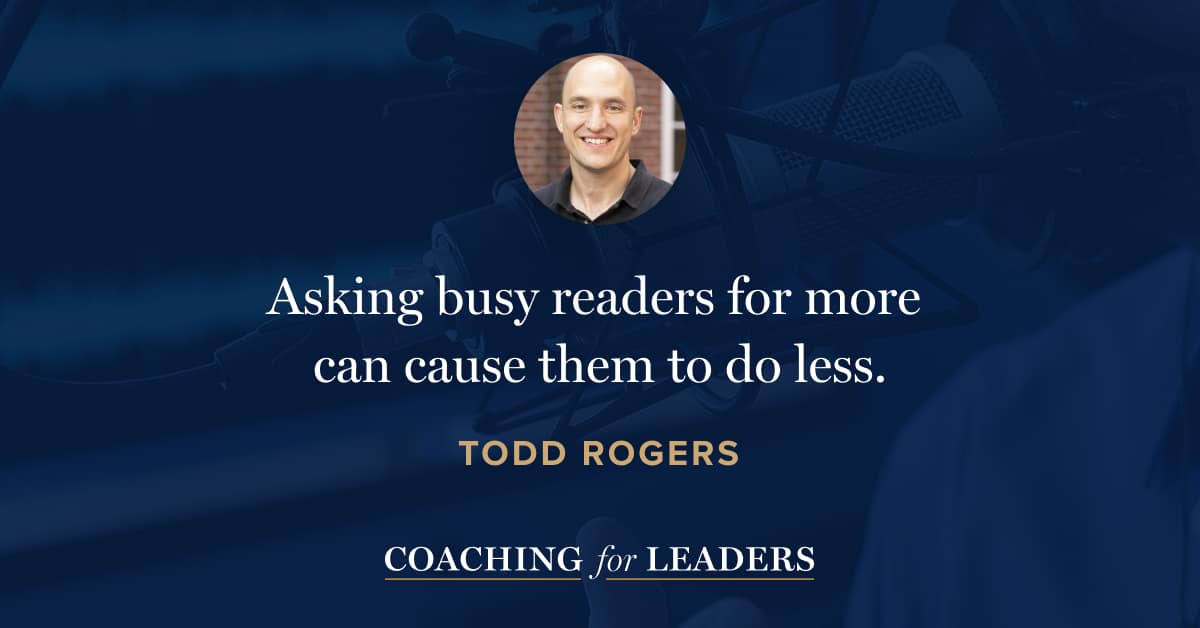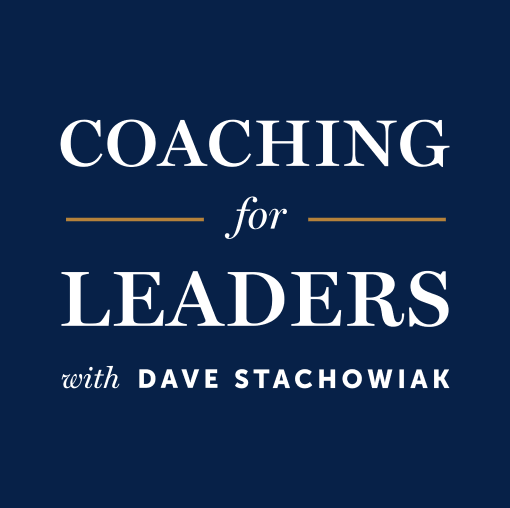Todd Rogers: Writing for Busy Readers
Todd Rogers is a professor of public policy at Harvard University, where he has won teaching awards for the past seven consecutive years. He is a behavioral scientist and the cofounder of the Analyst Institute and EveryDay Labs. His opinion pieces have appeared in The New York Times, The Washington Post, the Los Angeles Times, and Politico, among other outlets. He's co-author with Jessica Lasky-Fink of Writing for Busy Readers: Communicate More Effectively in the Real World*.
You probably only skimmed that email I spent an hour writing. And let’s be equally honest the other way — I only skimmed the document your team worked on most of last week. This is the reality of how we all read in a busy world. On this episode, Tom and I discuss how to write so that people actually read what you send.
Key Points
- Virtually everyone is a writer in some significant way: emails, text messages, memos, social media posts, and many other daily communications.
- While your writing is important to you, the audience is often trying to spend as little time as possible processing what you’ve sent. Virtually everyone skims, especially in the context of work.
- Using fewer words make it more likely that people will engage with the message at all, much less taken action.
- Addressing fewer ideas often helps people engage better. Studies show better results for calls to action when fewer ideas are presented in a single communication.
- Asking busy readers for more can cause them to do less. Be mindful about the number of requests you are making in writing and eliminate those which aren’t essential.
Resources Mentioned
- Writing for Busy Readers: Communicate More Effectively in the Real World* by Todd Rogers and Jessica Lasky-Fink
- AI for Busy Readers (transform your writing in real-time using the science of Writing for Busy Readers)
Interview Notes
Download my interview notes in PDF format (free membership required).
Related Episodes
- The Surprising Truth About Influencing Others, with Daniel Pink (episode 84)
- Improve Your Writing With Practical Typography, with Matthew Butterick (episode 145)
- Make Your Reading More Meaningful, with Sönke Ahrens (episode 564)
Discover More
Activate your free membership for full access to the entire library of interviews since 2011, searchable by topic. To accelerate your learning, uncover more inside Coaching for Leaders Plus.





